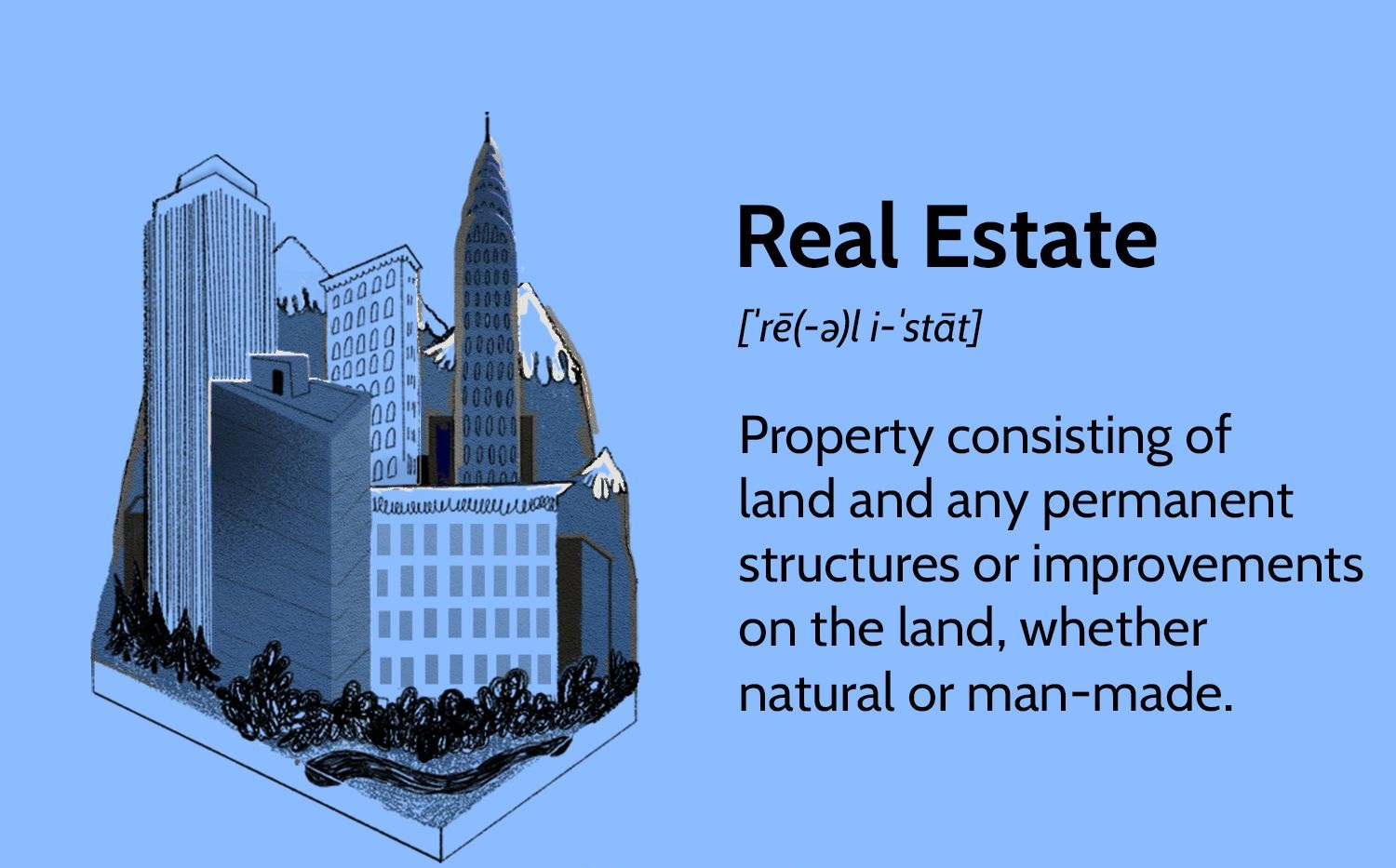Introduction
Mortgage warehouse lending plays a crucial role in the real estate industry by providing short-term financing for lenders. This type of lending supports mortgage originators by giving them the necessary funds to issue loans until they can sell them to investors in the secondary market. Mortgage warehouse lending is a vital component of the mortgage lending process as it allows lenders to maintain liquidity and continue originating new loans.
With the increasing demand for mortgages, lenders need efficient and flexible financing solutions. This is where mortgage warehouse lending comes into play. It provides lenders with a revolving line of credit, allowing them to fund the origination of mortgages before selling them to investors.
Mortgage warehouse lending operates on a short-term basis, typically ranging from a few days to a few months. It provides lenders with the working capital needed to fund the loan process, including underwriting, closing, and servicing the mortgages. Once the mortgages are sold to investors, the lender repays the warehouse line of credit.
In recent years, mortgage warehouse lending has gained popularity due to its numerous advantages for lenders. It offers flexibility, liquidity, and cost-effectiveness, enabling lenders to meet the demands of borrowers and capitalize on opportunities in the housing market.
In this article, we will delve into the details of mortgage warehouse lending, exploring how it works, its advantages, eligibility criteria, and the key players in this industry. We will also discuss the differences between mortgage warehouse lending and traditional mortgage loans and highlight the risks associated with this type of financing. By the end, you will have a comprehensive understanding of mortgage warehouse lending and its significance in the mortgage industry.
What is Mortgage Warehouse Lending?
Mortgage warehouse lending refers to a form of short-term financing that allows mortgage originators, such as banks or mortgage companies, to fund the origination of mortgage loans. It serves as an intermediary step between the loan origination and the sale of the mortgages to investors in the secondary market.
When a borrower applies for a mortgage loan, the lender needs immediate funds to cover the costs associated with processing and closing the loan. Mortgage warehouse lending provides the necessary liquidity to lenders, allowing them to fund the loan until it is sold to investors.
The key feature of mortgage warehouse lending is that it operates under a revolving line of credit. Lenders can borrow from this line of credit on a short-term basis, typically ranging from a few days to a few months, to fund the origination of mortgages. Once the mortgages are sold in the secondary market, the lender repays the line of credit.
One of the advantages of mortgage warehouse lending is that it offers flexibility to lenders. They can tailor the line of credit according to their specific needs and the volume of mortgage loans they originate. This flexibility allows lenders to efficiently manage their cash flow and meet the demands of borrowers in a timely manner.
Furthermore, mortgage warehouse lending provides lenders with cost-effective financing. By borrowing from a warehouse line of credit, lenders can avoid the need for long-term loans or tapping into their own capital. This not only saves on interest expenses but also enables lenders to utilize their capital for other business activities.
In summary, mortgage warehouse lending is a vital component of the mortgage financing process. It offers short-term funding to lenders, allowing them to originate mortgage loans while awaiting their sale in the secondary market. With its flexibility, liquidity, and cost-effectiveness, mortgage warehouse lending enables lenders to meet the demands of borrowers and efficiently manage their cash flow.
How Does Mortgage Warehouse Lending Work?
Mortgage warehouse lending operates on a simple and efficient model that facilitates the flow of funds from lenders to borrowers in the mortgage lending process. Let’s explore the key steps involved in mortgage warehouse lending:
1. Lender establishes a warehouse line of credit: A lender, such as a bank or mortgage company, establishes a warehouse line of credit with a warehouse lender. The warehouse lender provides a revolving line of credit that the lender can draw upon to fund the origination of mortgage loans.
2. Lender originates mortgage loans: Once the warehouse line of credit is established, the lender can start originating mortgage loans. This involves receiving loan applications, underwriting, and approving borrowers for the loans. During this stage, the lender requires immediate funds to cover the costs associated with originating the loans.
3. Lender funds the loans: To fund the origination of mortgage loans, the lender draws upon the warehouse line of credit. These funds are used to cover various expenses like appraisal fees, title search fees, and closing costs. The amount borrowed from the warehouse line of credit is typically based on the value of the mortgage loans the lender wants to fund.
4. Lender sells the loans in the secondary market: Once the mortgage loans are originated, the lender packages them and sells them to investors in the secondary market. This allows the lender to repay the warehouse line of credit. The sale of the loans provides the lender with the necessary liquidity to continue originating new mortgage loans.
5. Warehouse lender receives repayment: When the mortgage loans are sold, the funds from the sale are used to repay the warehouse line of credit. The warehouse lender receives the principal and interest payments associated with the mortgage loans, along with any fees and charges. Once the warehouse line of credit is fully repaid, the cycle can start again with new mortgage loans.
It’s important to note that mortgage warehouse lending operates on a short-term basis, typically ranging from a few days to a few months. The revolving nature of the warehouse line of credit enables lenders to efficiently manage their financing needs, ensuring a continuous flow of funds for mortgage loan origination.
In summary, mortgage warehouse lending provides lenders with the necessary funds to originate mortgage loans. By establishing a warehouse line of credit, lenders can draw upon the funds to cover the costs of loan origination. The loans are then sold in the secondary market, allowing the lender to repay the warehouse line of credit and continue the cycle of loan origination.
Advantages of Mortgage Warehouse Lending
Mortgage warehouse lending offers several advantages for lenders, making it a favorable financing option in the mortgage industry. Let’s explore the key advantages of mortgage warehouse lending:
1. Flexibility: Mortgage warehouse lending provides lenders with flexibility in managing their cash flow. By having access to a revolving line of credit, lenders can borrow funds as needed to fund the origination of mortgage loans. This allows them to respond quickly to borrower demands and capitalize on opportunities in the housing market.
2. Liquidity: Maintaining liquidity is crucial for lenders in the mortgage industry. Mortgage warehouse lending ensures that lenders have the necessary funds to cover the costs associated with loan origination. It reduces the strain on their capital and allows them to allocate their resources efficiently.
3. Cost-effectiveness: Borrowing from a warehouse line of credit can be a cost-effective financing solution for lenders. It eliminates the need for long-term loans or utilizing their own capital, which can incur higher interest expenses. Mortgage warehouse lending provides lenders with short-term financing, reducing interest costs and freeing up capital for other business activities.
4. Scalability: As the demand for mortgage loans fluctuates, lenders need to be able to scale their operations accordingly. Mortgage warehouse lending provides lenders with the ability to adjust their financing needs based on the volume of loans they originate. This scalability ensures that lenders can efficiently meet the demands of borrowers without incurring unnecessary costs.
5. Risk mitigation: Mortgage warehouse lending helps mitigate risks for lenders. By quickly selling the mortgage loans in the secondary market, lenders reduce their exposure to interest rate fluctuations, credit risk, and other market uncertainties. This allows lenders to offload the risk associated with mortgage loans and focus on originating new loans.
6. Access to investors: Mortgage warehouse lending provides lenders with a convenient pathway to connect with investors in the secondary market. The ability to sell loans quickly and efficiently allows lenders to establish relationships with various investors, ensuring a steady flow of funds for loan origination.
In summary, mortgage warehouse lending offers a range of advantages for lenders. It provides flexibility and liquidity, allowing lenders to manage their cash flow efficiently. Additionally, it offers cost-effectiveness, scalability, risk mitigation, and access to investors. These advantages make mortgage warehouse lending an attractive financing option for lenders in the mortgage industry.
Eligibility Criteria for Mortgage Warehouse Lending
To qualify for mortgage warehouse lending, lenders must meet certain eligibility criteria set by warehouse lenders. These criteria ensure that the lender is financially stable and capable of responsibly managing the warehouse line of credit. Let’s explore the common eligibility requirements for mortgage warehouse lending:
1. Financial Stability: Warehouse lenders typically require lenders to demonstrate financial stability. This includes providing financial statements, such as balance sheets and income statements, to show a solid financial standing. Lenders need to have sufficient assets and working capital to cover the potential risks associated with mortgage warehouse lending.
2. Experience and Track Record: Warehouse lenders assess the experience and track record of potential borrowers. They look for lenders with a history of successful mortgage loan origination and a proven ability to effectively manage their loan portfolio. Lenders may need to provide details of their loan origination volume, loan performance, and any previous warehouse lending relationships.
3. Compliance and Risk Management: Compliance with industry regulations and risk management practices is a critical factor in qualifying for mortgage warehouse lending. Lenders need to demonstrate that they have robust internal controls in place to manage compliance obligations and effectively mitigate risks associated with mortgage lending. Warehouse lenders may conduct audits or reviews of a lender’s risk management processes before approving a warehouse line of credit.
4. Secondary Market Relationships: Having established relationships with investors in the secondary market is also important for eligibility. Warehouse lenders may require lenders to demonstrate their ability to sell mortgage loans in the secondary market. This ensures that lenders can efficiently repay the warehouse line of credit once the mortgage loans are sold.
5. Loan Origination Quality: The quality of the mortgage loans being originated is another consideration. Warehouse lenders often have specific requirements regarding underwriting standards, loan documentation, and loan performance. Lenders need to ensure that their loan origination processes align with these requirements to maintain eligibility for mortgage warehouse lending.
It is important to note that the eligibility criteria for mortgage warehouse lending may vary among warehouse lenders. Lenders should consider approaching multiple warehouse lenders to find the best fit for their specific lending needs.
In summary, to qualify for mortgage warehouse lending, lenders must demonstrate financial stability, experience in mortgage loan origination, compliance and risk management capabilities, established relationships in the secondary market, and a commitment to maintaining high loan origination quality. Meeting these eligibility criteria is essential for lenders to access the benefits of mortgage warehouse lending.
Differences Between Mortgage Warehouse Lending and Traditional Mortgage Loans
Mortgage warehouse lending and traditional mortgage loans are two distinct financing methods in the mortgage industry. While they both serve the purpose of providing funds for mortgage loans, there are key differences between them. Let’s explore these differences:
1. Funding Source: In traditional mortgage loans, the funds are sourced directly from the lender or financial institution originating the loan. The lender uses its own capital or deposits from customers to provide the loan. On the other hand, mortgage warehouse lending involves borrowing funds from a warehouse lender to finance the origination of mortgage loans before they are sold in the secondary market.
2. Loan Origination Process: The loan origination process differs between mortgage warehouse lending and traditional mortgage loans. In traditional mortgage loans, the lender directly originates and underwrites the loan, adhering to their internal guidelines and loan criteria. In mortgage warehouse lending, the lender still originates the loan but may need to comply with additional criteria set by the warehouse lender to ensure the eligibility of the loans for sale.
3. Timeframe: Traditional mortgage loans usually have longer-term repayment structures, typically ranging from 15 to 30 years. Borrowers make monthly payments towards the principal and interest over the loan term. In contrast, mortgage warehouse lending is short-term financing, with loans generally repaid within a few days to a few months. The short-term nature of mortgage warehouse lending allows lenders to quickly access funds and maintain liquidity while awaiting the sale of the loans.
4. Loan Servicing: Traditional mortgage loans are typically serviced by the lender or a third-party servicer, who collects payments, manages escrow accounts, and handles other administrative tasks. In mortgage warehouse lending, the loans are often sold to investors in the secondary market, and the servicing rights may be transferred to a different entity. The warehouse lender ensures that the loans comply with the servicing requirements of the investors.
5. Risk Exposure: Lenders bear different levels of risk in mortgage warehouse lending compared to traditional mortgage loans. In traditional mortgage loans, lenders carry the risk of loan default, interest rate fluctuations, and other credit-related risks. However, in mortgage warehouse lending, the risk exposure is reduced as the loans are quickly sold to investors in the secondary market, transferring the risk to the investors.
6. Loan Repayment: Borrowers of traditional mortgage loans make regular monthly payments to the lender over the loan term until the loan is fully repaid. In mortgage warehouse lending, the loan repayment occurs once the loans are sold to investors in the secondary market. The proceeds from the sale are used to repay the warehouse line of credit, closing the financing cycle.
In summary, mortgage warehouse lending and traditional mortgage loans have distinct characteristics in terms of funding source, loan origination process, timeframe, loan servicing, risk exposure, and loan repayment. Understanding these differences is crucial for lenders and borrowers to determine which financing option aligns with their specific needs and goals.
Key Players in Mortgage Warehouse Lending
Mortgage warehouse lending involves collaboration between different key players in the mortgage industry. Each player has a specific role in facilitating the flow of funds and ensuring the smooth functioning of the mortgage warehouse lending process. Let’s explore the key players involved:
1. Lenders: Lenders are the primary participants in mortgage warehouse lending. They can be banks, mortgage companies, or credit unions that originate mortgage loans. Lenders rely on warehouse lines of credit to fund the origination of these loans before selling them in the secondary market. Lenders must meet the eligibility criteria set by warehouse lenders to access the necessary funds for mortgage loan origination.
2. Warehouse Lenders: Warehouse lenders provide the revolving lines of credit that lenders use to finance the origination of mortgage loans. They are specialized financial institutions that have expertise in mortgage warehouse lending and are well-connected in the secondary market. Warehouse lenders assess the financial stability, experience, and compliance of lenders before extending a line of credit. They also monitor the loans in the warehouse and ensure their eligibility for sale in the secondary market.
3. Investors: Investors play a crucial role in the mortgage warehouse lending process. Once the mortgage loans are originated and funded through the line of credit, lenders sell these loans to investors in the secondary market. Investors can be banks, hedge funds, mortgage-backed securities issuers, or other entities looking to invest in mortgage loans. They provide the necessary liquidity by purchasing the loans, enabling lenders to repay the warehouse line of credit and continue originating new loans.
4. Servicers: Servicers are responsible for managing the administration and servicing of the mortgage loans in the secondary market. They are often separate entities from the lenders and may be contracted by investors to handle tasks such as collecting borrower payments, managing escrow accounts, and addressing borrower inquiries. Servicers play a critical role in ensuring the smooth operation of mortgage warehouse lending by adhering to investor requirements and maintaining loan performance standards.
5. Regulatory Bodies: Various regulatory bodies oversee mortgage warehouse lending to ensure compliance with industry regulations. These bodies, such as federal agencies or state authorities, set guidelines and monitor the activities of lenders, warehouse lenders, and servicers. The regulatory bodies aim to protect the interests of borrowers, promote fair lending practices, and maintain the stability of the mortgage market.
Collaboration among these key players is essential for the functioning of mortgage warehouse lending. Lenders rely on warehouse lenders for financing, investors provide liquidity by purchasing the loans, servicers administer and manage the loans, and regulatory bodies ensure compliance with industry regulations.
In summary, the key players in mortgage warehouse lending include lenders, warehouse lenders, investors, servicers, and regulatory bodies. Their collaboration ensures the smooth flow of funds, the eligibility of loans for sale, and the efficient servicing of mortgage loans in the secondary market.
Risks Associated with Mortgage Warehouse Lending
While mortgage warehouse lending offers various benefits for lenders, it also comes with certain risks that need to be carefully managed. Understanding these risks is essential for lenders engaging in mortgage warehouse lending. Let’s explore the key risks associated with this type of financing:
1. Liquidity Risk: Mortgage warehouse lending relies on the ability to sell the originated loans in the secondary market. If there is a downturn in the market or a lack of investor demand, lenders may face challenges in selling the loans. This can lead to a liquidity crunch, where lenders struggle to repay the warehouse line of credit, impacting their ability to continue originating new loans.
2. Pricing Risk: The sale of mortgage loans in the secondary market is subject to pricing fluctuations. Changes in interest rates, investor demand, and market conditions can impact the price at which the loans are sold. If the loans are sold at a lower price than anticipated, it can result in lower profits for the lender or even significant losses, affecting their financial stability.
3. Credit Risk: Lenders face credit risk when originating mortgage loans. If borrowers default on their mortgage payments, lenders bear the risk of potential losses. While mortgage warehouse lending reduces credit risk to some extent by quickly selling the loans in the secondary market, there is still a risk exposure during the time the loans are held in the warehouse.
4. Compliance and Legal Risk: Mortgage warehouse lending involves adherence to various regulatory requirements and compliance obligations. Failure to comply with these regulations can expose lenders to legal and reputational risks. Regulatory changes or violations can result in penalties, fines, or even the loss of necessary licenses, impacting the lender’s ability to continue operations.
5. Operational Risk: The mortgage warehouse lending process involves several operational complexities, including loan origination, documentation, and loan tracking. Errors or inefficiencies in these processes can lead to delays, losses, or even legal issues. Additionally, cyber threats and data breaches pose risks to the security and privacy of sensitive borrower information.
6. Market Risk: Mortgage warehouse lending is influenced by broader market conditions. Changes in interest rates, economic factors, and housing market trends can impact the demand for mortgage loans and the sale of loans in the secondary market. Lenders need to monitor and manage market risk to effectively navigate through market fluctuations.
To mitigate these risks, lenders engaged in mortgage warehouse lending implement risk management practices, such as conducting thorough due diligence on borrowers, implementing robust compliance systems, maintaining strong relationships with investors, and regularly monitoring loan performance. Risk management strategies also involve diversifying loan portfolios, establishing contingency plans, and staying informed about regulatory changes and market trends.
In summary, mortgage warehouse lending involves risks such as liquidity risk, pricing risk, credit risk, compliance and legal risk, operational risk, and market risk. By implementing effective risk management strategies, lenders can navigate through these risks and maximize the benefits offered by mortgage warehouse lending.
Conclusion
Mortgage warehouse lending plays a vital role in the mortgage industry, providing short-term financing to mortgage originators and facilitating the flow of funds to meet the demands of borrowers. This form of financing offers flexibility, liquidity, and cost-effectiveness to lenders, allowing them to efficiently manage their cash flow and capitalize on opportunities in the housing market.
Through mortgage warehouse lending, lenders can access revolving lines of credit from warehouse lenders to fund the origination of mortgage loans. These loans are then sold to investors in the secondary market, enabling lenders to repay the line of credit and continue originating new loans. The short-term nature of mortgage warehouse lending allows lenders to maintain liquidity and respond quickly to borrower needs.
While mortgage warehouse lending offers numerous advantages, such as financing flexibility and risk mitigation, it also comes with risks that need to be carefully managed. Lenders must navigate potential liquidity risks, pricing risks, credit risks, compliance and legal risks, operational risks, and market risks to ensure their financial stability and success in the industry.
Eligibility criteria set by warehouse lenders determine lenders’ access to mortgage warehouse lending, focusing on financial stability, experience, compliance, and secondary market relationships. Collaboration among lenders, warehouse lenders, investors, servicers, and regulatory bodies is crucial for the smooth functioning of mortgage warehouse lending.
Overall, mortgage warehouse lending serves as an important financing solution for lenders in the mortgage industry. Through its unique model, lenders can efficiently fund the origination of mortgage loans, maintain liquidity, and connect with investors in the secondary market. However, it is essential for lenders to navigate the associated risks and implement robust risk management strategies to ensure success in mortgage warehouse lending.

























